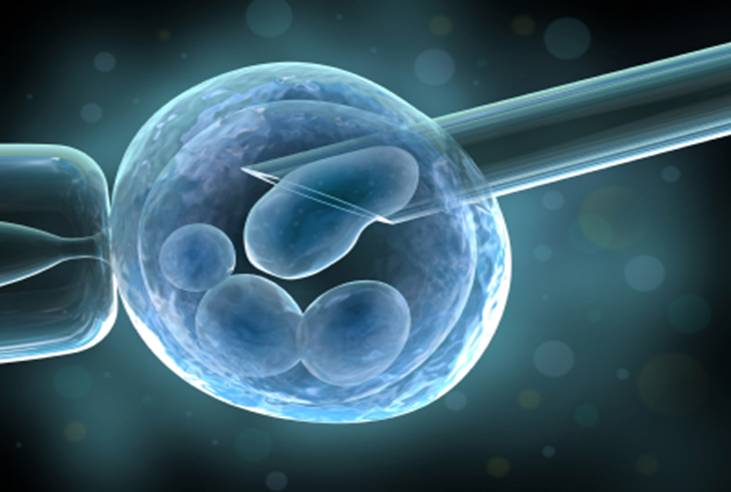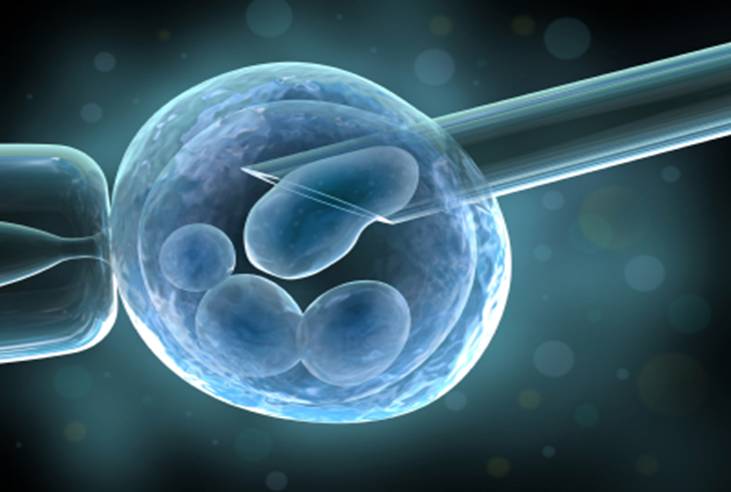Respectful Destruction On the Moral Permissibility of Embryonic Research
Main Article Content
Abstract
Cryogenically frozen embryos present a major problem for virtually all fertility centers across the globe. As procedures for IVF, including egg retrieval and Inter-cytoplasmic-sperm-insemination (ICSI), have become more precise, predictable, and promising, the production of excess viable embryos now leaves couples with the decision to freeze or discard the surplus. In most cases, couples choose to freeze the extra embryos—a choice that subsequently gives rise to a multitude of ethical issues. In this paper, I will focus specifically on options for the large number of embryos frozen to date. The four main options for frozen embryos include: disposal, indefinite freezing, research, and embryo adoption. The philosophical issue at the heart of this debate centers on the moral status of embryos. The choice a couple will make with regard to the future of the embryos is fundamentally tied to their distinct view of this entity’s moral status.
The pro-life model maintains that biologically, an embryo is no different than a fetus or fully-fledged human being. If one considers an embryo as a person with rights, then donating each frozen embryo to an infertile couple becomes the only acceptable option. Most people grant embryos at least some meaning beyond a cluster of disposable cells, while others hesitate with regard to embryo adoption, a logistical nightmare that often leads to disagreement and ultimate failure. Indefinite freezing is a costly enterprise, offering only a temporary solution. With this in mind, the only viable alternative is to donate leftover embryos for research, a highly controversial topic that has yet to be fully resolved in public policy.
Based on this pro-choice framework, the assumption that an embryo lacks moral status (personhood) is not sufficient in determining what to do with frozen embryos, and another categoryis necessary to further explain our moral judgments. Regardless of moral status, there should be sincere moral deliberation about an embryo’s treatment, prompting the question of how one spells out notions of respect. Ascribing embryos a strictly symbolic valuegrants them the respect they deserve. However, even if one takes into account symbolic value, using frozen embryos for pertinent research is still morally permissible—proving it is in fact possible to “respect what we destroy.”
It is fundamental to first clarify the moral status of embryos before establishing the moral permissibility of intentional destruction. Providing this working hypothesis will allow for a clearer understanding of why the morality of research is not wholly determined by an embryo’s moral status. The interest view, developed by bioethicist Bonnie Steinbock, stresses that the most important characteristic for moral status is sentience— the ability to feel pain. While it is not quite clear why certain aspects of the personhood view, including the ability to reason or use language, pertain to moral status, the moral significance of sentience is straightforward. The singular fact that a being has the capability to suffer provides a strong reason to treat it with respect. A sentient being has stake in its life since what is done to it matters directly to that being. Broadly speaking, the notion of sentience describes a capacity for having experiences of any kind, an essential requirement, specifically, for having interests. From the moral point of view, lacking sentience makes it impossible for one to have interests of one’s own. Without sentience, it is not possible to take the interests of a being into consideration with regard to moral status. Following this view, since embryos lack any experiences, desires, or interests that would give them a stake in something, they therefore lack moral status.
Although the interest view can be used to define the moral status of embryos, this definition alone cannot adequately direct us when deciding what ought to be done with frozen embryos. As Steinbock rightly recognizes, treating an embryo as mere bodily tissue would make many people “profoundly uncomfortable.” A compromise position is in order, between the individuals who view embryos as human subjects with full rights, and others who cast off embryos as disposable waste. This compromise entails creating a new category that can sufficiently convey our moral feelings toward embryos, since it is possible that non-sentient embryos can still rightfully embody a type of moral value (there are still reasons for protecting a being based on our own interests or its own intrinsic value). However, the question remains—what degree of value should be granted to these embryos and how can this value still support the use of embryos for research?
I suggest a way to grant embryos significant respect is through appreciating strictly their symbolic value. As Steinbock emphasizes, embryos deserve respect because they are an emergent human life, a symbol of human existence. As “a source of awe,” with the potential to one day develop into a full human being, an embryo represents something innately valuable. Embryos are a symbol of the mysteries of biology, an emblem of successful fertilization between egg and sperm. Granting an embryo symbolic value allows for it to be properly respected although it is not a moral subject with interests of its own.
Philosopher Joel Feinberg reminds us that it is important we do not respect symbols too much, for then we begin to respect them at the “expense of the very values they symbolize,” becoming tangled in the moral web of “sentimentality and squeamishness.” Sentimental actions can often lead to unwarranted responses, thereby creating a kind of “hypocritical inconsistency.” While on one hand an embryo can evoke sentiment through its symbolic representation of human life, if the sentiment toward embryos becomes too strong, one can lose sight of the ultimate goal of embryonic research—to extend the gift of human life. The vast benefits of using frozen embryos for research provide a strong argument to outweigh any concern that a practice like this weakens sentiments, thereby degrading human character. When determining what to do with embryos, I insist it is best to leave sentiments aside and focus strictly on their symbolic nature.

A conflict arises surrounding the fate of unused and costly frozen embryos, the potential for scientific advances through embryonic research, and the symbolic commitments we owe to embryos. Robertson suggests that a key distinction between persons with interests and mere symbols is that the latter do not make moral claims on the individual. A symbolic meaning can be so variable and personal that subordinating a symbol to research, in this case an embryo, does not seem to violate any moral duties.
We all acknowledge the need to find a common ground between “prohibition on destruction and a moral license to kill.” When determining how one can respect what is ultimately destroyed, the Native American’s view toward animals provides an interesting illustration. While ultimately sacrificed, wild animals are highly revered by Native Americans, serving as living symbols of the natural world. Indians honor what they destroy through never putting any piece to waste, using every part of the animal for various purposes, even the bones. While I am not suggesting a researcher perform a ritual after the use of each embryo, I believe it to be important that the destruction and disposal in some way reflect the significance of the entity being destroyed.
A similar example involves the use of human cadavers for educational and scientific purposes. The significance of a cadaver derives from the very nature of what it symbolizes— a deceased human being. But as Feinberg urges, this symbolism must be balanced against the benefit of medical knowledge and the possibility that a multitude of illnesses and deaths might be prevented through the study of the dead. The use of dead bodies, Feinberg contends, will not lead to an overall decline in symbolic meaning since the medical practice will not be performed “crudely, indiscreetly, or disrespectfully.” Embryonic research should be approached similarly, the work performed by professionals who execute with nothing less than the utmost respect for the human life embryos symbolize.
In order to properly respect embryos for their symbolic value, regulations must be developed for research. Above all, the research conducted using spare embryos can be neither “frivolous nor trivial.” Using embryos for something mundane, for instance, in shampoo testing, would not grant embryos the respect they deserve. However, respect for embryos does not rule out significant research that leads to the cure of debilitating diseases, potentially saving many lives through scientific advances. Embryonic stem cells hold great promise in research due to their ability to develop into a variety of tissue types and multiply once cultured in the lab.
Another essential restriction requiring careful consideration involves the issue of commodification. The buying and selling of embryos for research could very well lead down a slippery slope that would degrade the moral value of embryos, unavoidably displaying contempt rather than respect for these symbols of human life. Embryos given for research must be obtained through altruistic donation, and never viewed as property. Donating to research must reflect a carefully considered choice—not an alternative based on mere monetary incentive. In my opinion, the use of embryos for scientific advancement grants them indisputably more respect than simply disposing them in a fertility center’s waste bin.
Daniel Callahan grapples with the concept of ultimately destroying something one claims to respect. He questions whether granting an embryo this “profound respect” is an act of “profound wisdom” or merely “profound self-deception.” In his opinion, this is an “odd form of esteem” for something that is damaged and destroyed during the research process. He fears that validating research while concurrently claiming to respect embryos simply gives license to do anything with a clear conscience. Callahan demands that only research within moral limits should be granted respect. However, if the research is performed within the restrictions mentioned, I believe that it indeed lies within moral limits, and can retain moral justifiability. Callahan insists that embryonic research is a classic example of the ends justifying the means. However, I believe that this statement depends on the moral validity of the end in question. If the end might result in the potential to cure many diseases, then using previously frozen embryos as a means to achieve this end remains perfectly justifiable.
Callahan claims that the only way to make a just claim for embryo research would be through “stripping pre-implantation embryos of any value at all,” a statement I believe leaves these embryos very little moral defense. Respect for the symbolic value of an embryo can coincide with the employment of these unused embryos for pertinent, and hopefully, life-altering research. Rather than requiring a tradeoff between respect and research, I maintain that if one views an embryo to have strictly symbolic value and certain restrictions are carefully crafted and implemented, then respect and research can harmoniously coexist.
Additional Readings:
American Bar Association Model Act Governing Assisted Reproductive Technology. Publication. American Bar Association. Family Law's Committee on Reproductive and Genetic Technology, Feb. 2008.
Beauchamp, Tom L. "The Failure of Theories of Personhood." Kennedy Institute of Ethics Journal9.4 (1999): 309-24.
Drapkin, Anne L. "Largest Study of Fertility Patients Shows Concerns About Embryo Disposition." DukeHealth.org. Duke Medicine News and Communications, 4 Dec. 2008.
Ethics Committee of American Society for Reproductive Medicine. "Donating Spare Embryos for Stem Cell Research." Fertility and Sterility 91.3 (2009): 667-70.
Article Details

This work is licensed under a Creative Commons Attribution 4.0 International License.

